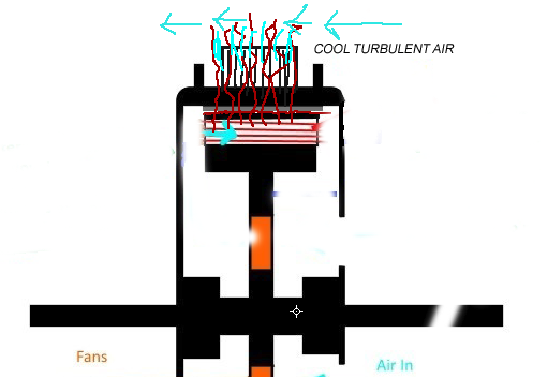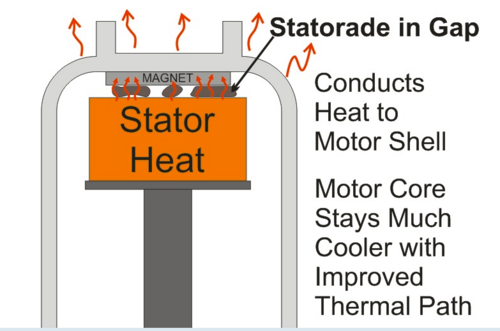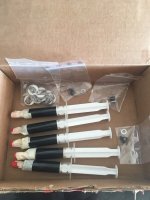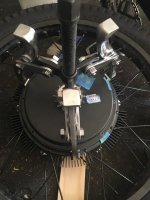macribs
10 MW
- Joined
- Jul 22, 2014
- Messages
- 3,702
Have you opened up the motor yet? Or maybe looked of exploded view drawings of dd hub motors?
Here you can see the magnets attached to the outer shell, the shell get hot when motor is put to work. The harder the motor work the hotter it gets.
The heat does not have many ways out of the hub, so heat is radiating from motor to the outer shell of the motor, including side covers, maybe some thru the axle and wires also. But there is bottle neck. Air. Air is a poor coductor of heat.

Inside the outer shell is the rotor, windings and so on. Between is a thin layer of air. That thin layer of air makes if hard for heat to radiate to the outer shell. If the air gap could be bridged somehow that would allow for more heat to travel faster to the outside of the hub. Hence FF.
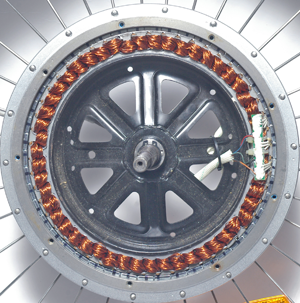
You got a motor with large outer shell. And your motor can easily shed a lot of heat. But the air gap still is restricting the heat flow out of the motor. When you fill FF in the motor the magnetic FF will get drawn to the magnets of the motor and make a bridge where there used to be air gap. Now heat can travel faster to the outside of the motor where the speed wind will help cool motor down.
Here you can see the magnets attached to the outer shell, the shell get hot when motor is put to work. The harder the motor work the hotter it gets.
The heat does not have many ways out of the hub, so heat is radiating from motor to the outer shell of the motor, including side covers, maybe some thru the axle and wires also. But there is bottle neck. Air. Air is a poor coductor of heat.

Inside the outer shell is the rotor, windings and so on. Between is a thin layer of air. That thin layer of air makes if hard for heat to radiate to the outer shell. If the air gap could be bridged somehow that would allow for more heat to travel faster to the outside of the hub. Hence FF.

You got a motor with large outer shell. And your motor can easily shed a lot of heat. But the air gap still is restricting the heat flow out of the motor. When you fill FF in the motor the magnetic FF will get drawn to the magnets of the motor and make a bridge where there used to be air gap. Now heat can travel faster to the outside of the motor where the speed wind will help cool motor down.







